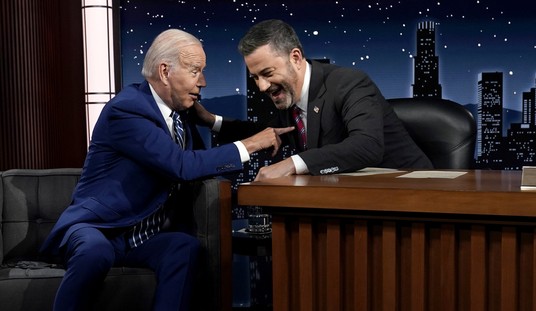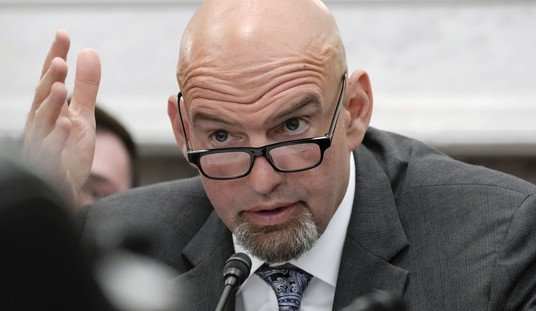As if Andrew Cuomo’s policies didn’t have a high enough body count. New York’s embattled governor ordered facilities housing the developmentally disabled to admit COVID-19 patients too, mirroring the policy he ordered for nursing homes. Unlike the latter, however, Cuomo never rescinded this policy — and it might have resulted in hundreds of deaths in those facilities:
New York Gov. Andrew Cuomo’s administration ordered homes for people with developmental disabilities to accept coronavirus patients — and never rescinded the order.
The April 10 directive, which mirrored the Cuomo administration’s controversial order to nursing homes, also told homes for people with developmental disabilities that they could not require hospitalized residents to be tested for coronavirus prior to admission or readmission.
Five hundred fifty-two residents at homes for people with developmental disabilities have died of coronavirus, the New York Office for People With Developmental Disabilities (OPWDD) told Fox News on Monday.
More than 6,900 people out of the more than 34,552 who live in such resident homes have been infected with the virus, according to OPWDD.
Just how far out of the norm are these numbers? This matters when attempting to determine whether this policy created excess deaths. As one might imagine, group home settings and health issues create their own vulnerabilities, as a study of these facilities determined six months ago. However, even that raises its own questions:
Objective: To describe COVID-19 outcomes among people with IDD living in residential groups homes in the state of New York and the general population of New York State.
Methods: Data for people with IDD are from a coalition of organizations providing over half of the residential services for the state of New York, and from the New York State Department of Health. Analysis describes COVID-19 case rates, case-fatality, and mortality among people with IDD living in residential group homes and New York State through May 28, 2020.
Results: People with IDD living in residential group homes were at greater risk of severe COVID-19 outcomes: case rates – 7,841 per 100,000 for people with IDD compared to 1,910 for New York State; case-fatality – 15.0% for people with IDD compared to 7.9% for New York State; and mortality rate – 1,175 per 100,000 for people with IDD compared to 151 per 100,000 for New York State. Differences in cases and mortality rate were confirmed across regions of the state, but case-fatality rate was only higher for people with IDD in and around the New York City region.
Conclusions: COVID-19 appears to present a greater risk to people with IDD, especially those living in congregate settings. A full understanding of the severity of this risk will not be possible until US states begin publicly sharing all relevant data they have on COVID-19 outcomes among this population.
Clearly, this population is more vulnerable. But was that because of inherent vulnerability, or because Cuomo’s policies created more risk for infection than in the general population? And even if it’s the former rather than the latter, Cuomo has to explain why he ordered this policy that put more vulnerable people at higher risk — and then never rescinded the order, even after this study showed the dangers of it.
However, this story isn’t new. National Review’s Maria McFadden Maffucci and the Wall Street Journal’s James Freeman reported it out on February 22, a little over two weeks ago. Maffucci points up the risks created by this policy:
This dangerous directive ignored the realities of typical group-home setups — small homes with shared facilities and no place to isolate. And, adding insult to injury, such “congregate settings” for the disabled were not designated as “priority recipients” of desperately needed PPE. Under New York State’s Emergency Management Policies, “hospitals, EMS, nursing facilities, and dialysis centers” were eligible for aid with PPE, but not residences for the disabled. A watchdog group, Disability Rights New York, filed a complaint on April 9 with the U.S. Department of Health and Human Services, stating that “New Yorkers with ID/DD living in New York State licensed or certified group homes and other congregate settings are at serious risk of contracting and succumbing to COVID-19. Direct Service Providers who provide essential care for individuals in congregate care settings do not have access to PPE to prevent the spread of COVID-19 to the individuals residing in these settings and many individuals residing in these settings are unable to protect themselves from contracting the disease.” …
Ignored by the governor and his administration, distraught families had to take matters into their own hands to help their loved ones and discover the true extent of their plight. The result was the New York Alliance for Developmental Disabilities (NYADD), an advocacy group that now has over 5,000 members. Beginning in May 2020, members wrote letters begging for action to Governor Cuomo, health commissioner Howard Zucker, and the head of OPWDD, Thomas Kastner. Soon they were aided by state legislators, such as Assemblywoman Melissa Miller (R., Atlantic Beach), who led a virtual press conference on June 15, joined by Assemblywoman Mary Beth Walsh (R., Ballston), Assemblyman Ed Ra (R., Franklin Square), and Dutchess County executive Marc Molinaro, to plead for Governor Cuomo to allow family visits at group homes. OPWDD finally came out with guidance and protocols to start opening up the homes in mid-July.
The Disability and Health Journal study that tracked COVID-19 outcomes for the disabled relied on voluntary reporting from advocacy organizations because OPWDD had not as yet shared any data publicly. In their calculations, by the end of May, out of 20,431 group-home residents statewide, 1,602 had tested positive, and 240 had died. While there is still no official count, I learned from the Facebook page of NYADD that at a virtual OPWDD stakeholder meeting in November, the number of deaths was stated as 483, and the number of individuals testing positive over 3,000. Similar numbers were reported in the Albany Times Union.
Worth noting: Cuomo issued his order the day after the complaint got filed, on April 10.
Freeman raised the key question two weeks ago as well — did Cuomo cover this up as well as the excess deaths at nursing homes?
As is Cuomo custom, the state government withheld crucial information from public disclosure. Therefore scientists and policy makers had to try to make sense of limited data. Ms. Maffucci says that researchers often had to rely on voluntary reporting from advocacy organizations. …
If the Cuomo government ever allows a full accounting, perhaps researchers can estimate the precise impact of the directive to facilities on accepting Covid-positive patients.
The overall policy may live forever in the annals of bureaucratic cruelty. At the same time the Cuomo administration was turning down offers to expand treatment space for Covid patients—and instead forcing them into group homes, raising the risks for disabled residents there—Team Cuomo was also severely limiting family visits at such facilities. In other words, official Cuomo administration policy required people with disabilities to accept both greater risk of infection by strangers and less time with relatives.
The presumed motive behind these limits on contact was to prevent the spread of COVID-19. If Cuomo ordered these facilities to accept positive patients, however, that makes little sense. It seems more likely that at some point the motive behind these limitations was to keep family members in the dark about the impact of these policies. Given the book-cooking by Cuomo’s “top aides” of the nursing-home deaths data, hardly any other motive comes to mind.
Why is this being raised again now? Cuomo still has yet to answer for it, for one thing. But it might be that with Cuomo’s political strength rapidly dissipating, people are now demanding a full accounting of Cuomo’s disastrous leadership — and perhaps they will also demand a full accounting from the media that played along with Cuomo until Donald Trump finally left office.
It might be a while before media outlets provide that accounting, however …
You mean the "early pandemic leadership" where he forced nursing homes to accept COVID-positive patients and staff, and then lied about the outcomes? That early leadership? https://t.co/268yzJDLx9
— Ed Morrissey (@EdMorrissey) March 8, 2021








Join the conversation as a VIP Member